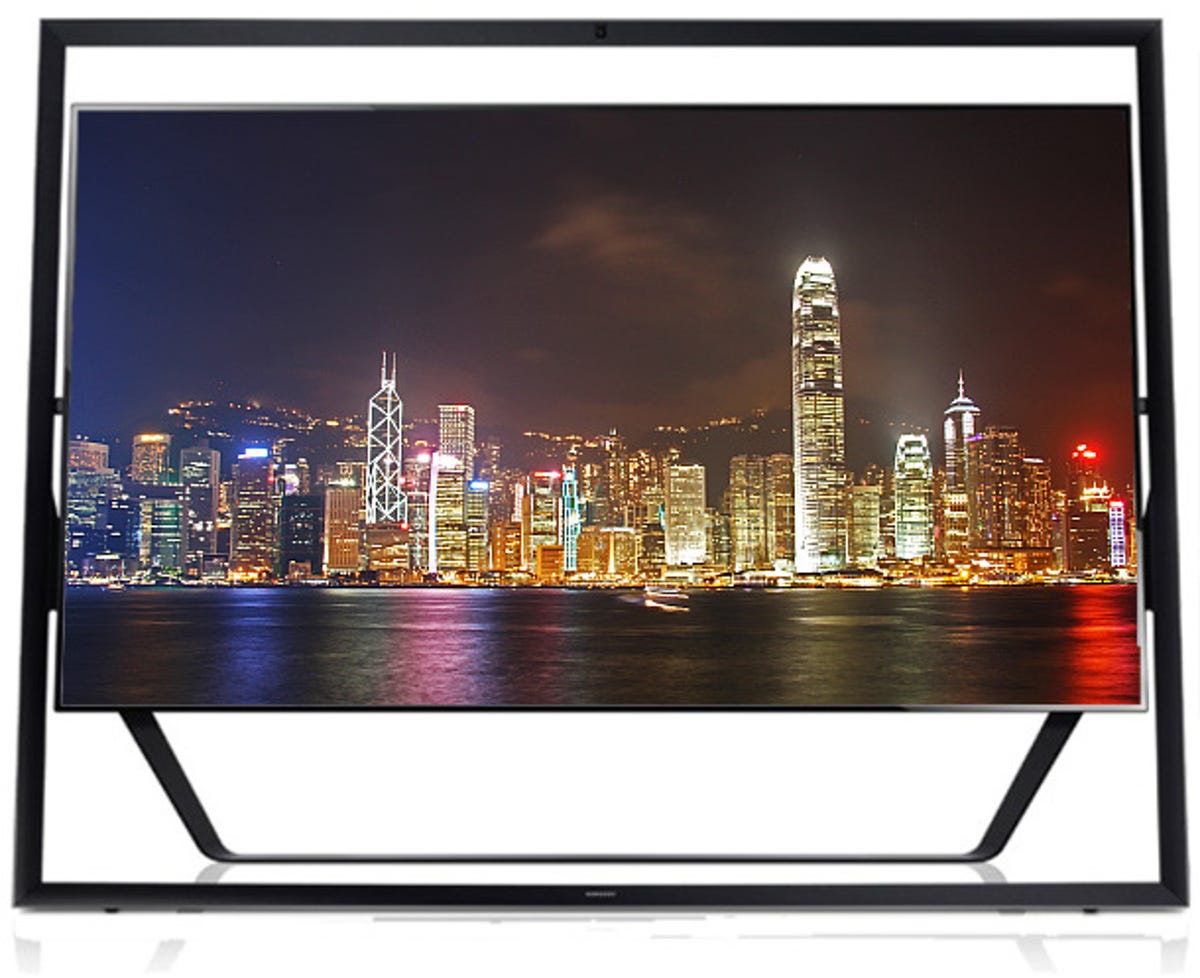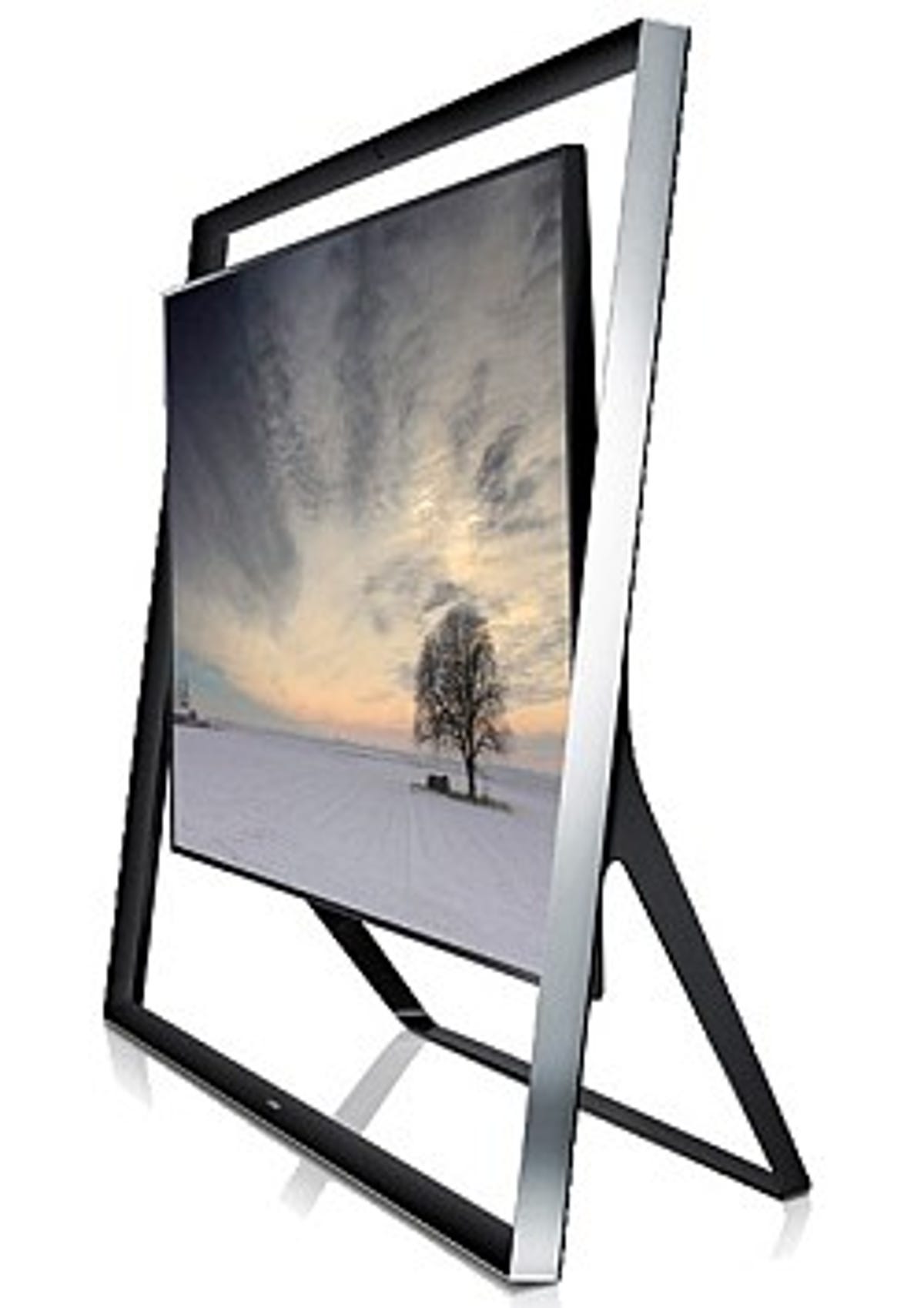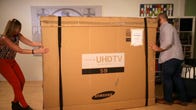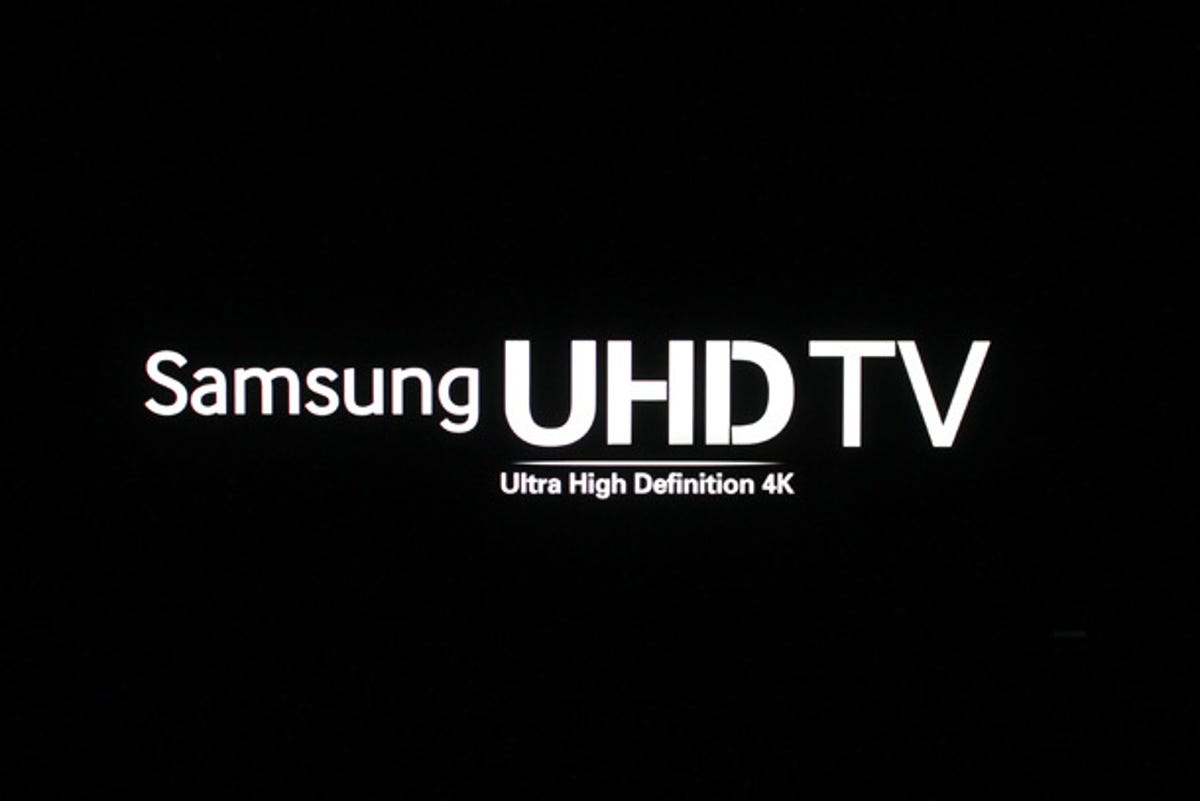
Screenshot by Geoffrey Morrison/CNET
This thing is huge. There’s just something about a TV this size that dominates a room. Even a big room. It plays tricks on the eyes, in a way, as your brain isn’t accustomed to seeing a TV of such girth.
The UN-85S9 isn’t just massive in size (85 inches, 189 pounds), but massive in price ($40,000) and resolution (Ultra HD “4K,” of course).
I got to spend some time with it, and here’s what I found out.
As you might have noticed, from the lack of “review” in the title, this isn’t a full review. We only had limited time with the TV, and it wasn’t at the CNET labs. Also, my name is not David or Ty. I did have access to a variety of equipment and test gear, though, so consider this a mostly-there-but-not-quite-full review.
BigMy “TV” at home is a projector on a 102-inch screen, and even I think this is a big TV. There’s something about the presence of a device-of-unusual-size that is impressive. The easel design for the stand, which I thought looked odd at best, weird at worst, at CES, actually sort of works. It makes the TV look even bigger, and makes it look different from your average television. That makes sense for something this price.
Like Samsung’s OLED and a few of its other new TVs, the UN-85S9 comes with the OneConnect box, an external input box where you connect all your sources, and then a single cable goes to the TV. Honestly, I like the idea. I think for most people it would make setup easier. More importantly, with HDMI 2.0 imminent, it’s a lot easier to replace a OneConnect box than cracking open a TV and replacing the input board (or more).


Samsung
I told you I liked 4KAt a distance of 9 to 10 feet, the detail was fantastic. Using Chris Heinonen’s 4K Calculator, with my 20/15 vision, I was able to get most of the detail potential in 4K. Using some Samsung-supplied 4K test clips, there was tremendous detail in faces and individual strands of hair. There were city shots, where you could make out people in the distance. If I moved closer (about 6 to 7 feet), I could see even more detail (as the math implies).
I didn’t notice much motion blur, but I forgot to check what the settings were.
While native 4K content is always impressive on such a big screen, the real test is what TVs like this do with the 99.99999 percent of content out there that isn’t 4K.
So to that end, I put in “Skyfall” on Blu-ray, letting the TV upconvert. First, just to see how it looks, I queued up Chapter 12, were Bond arrives at the casino in Macau. This is a tough scene for LED LCDs, as it’s got small pinpoints of light (lanterns) on an otherwise black background (night sky and dark water). The 85S9 did a great job finding the right mix of brightness and black level. Samsung’s own OLED puts the 85S9 to shame on this scene, but that’s fodder for a different article.
At the start of Chapter 13, which is mostly close-ups of M’s face, the internal upconversion did a great job creating as much detail as possible from the source image, from a normal viewing distance. If it were possible to do a side-by-side comparison, I’m sure you could tell the upconverted 1080p from native 4K content, but on its own it’s very detailed. I doubt most people would guess, if just shown this TV with upconverted 1080p, that it wasn’t native 4K.
Now, that’s from 9 to 10 feet. Move closer, and you can see where the image is a little softer than the native 4K material had been.
How about SD? The “Skyfall” Blu-ray came with a DVD copy, so game on. I picked the same scene with M. I’m sure it will surprise no one, but the image was way softer. Scalers can’t work magic, but the image was still quite watchable. Soft, but not ugly. Not bad for having to create 7,948,800 new pixels on a massive screen.
Related stories
- LED LCD vs. plasma vs. LCD
- Active 3D vs. passive 3D: What’s better?
- How big a TV should I buy?
- TV tech explainer: Every HDTV technology decoded
- What is refresh rate?
- Why Ultra HD 4K TVs are still stupid
- Audiophile Odyssey: Behind the Scenes at B&W, Meridian, and Abbey Road Studios
Test patterns and still imagesIn addition to the Blu-ray, they had a QuantumData 780A 4K Test Pattern Generator for me to play with, and not at all try to fit in my bag to take home. Both black and white field uniformity was very good, with only a very slight darkening at the extreme edges. As with most LED LCDs, if you give the 85S9 a black image, the LEDs shut off. There was a pattern with a dark gray bar about 20 percent up from the bottom that kept the LEDs active, and I used this to test black uniformity.
I dabble with photography on the side, so I brought some images on a USB thumbdrive that I shot on my Canon dSLR. I had scaled and/or cropped these to 3,840×2,160. I knew these images well, and I was curious how they’d look on the TV (and in such high resolution). As expected, city shots of Hong Kong and Shanghai looked incredibly detailed, with individual windows and textures usually only visible when zoomed in 1:1 on my monitor at home.


Now playing:
Watch this:
Unboxing the Samsung 85-inch 4K TV
6:09
Perhaps the most interesting test was a photo with a closeup of a face on the left of the image, and total black on the right. This could have easily resulted in a halo around the face because of the full-array local dimming, but practically no halo was visible. None that you would necessarily point to as caused by local dimming, anyway. This was quite impressive.
A photo of a photo seemed a lame way of trying to show you what it looked like, but I found an even better example. The below image was the breaker between different sections of their 4K test material. This is cropped and scaled so it will fit here, but as you can see (through JPEG compression and the Canon’s CMOS sensor) how these white letters on a black background have essentially no halos.


Geoffrey Morrison
While I didn’t have time to do measurements, Samsung’s TV guru, Mike Wood, had done color and color temp measurements. As is the case with most recent Samsung TVs, the primary colors (red, green, and blue) are spot on. For the secondary colors, cyan is also correct, while yellow is a touch green (but still in the zone) and magenta is a touch blue (but still in the zone).
Bottom line
As a halo/statement piece, the UN-85S9 certainly impresses. Let’s be honest, no TV is worth $40,000, but if you take the 85S9 as more of a stake in the ground of what Samsung can do freed from the limitations of budget, it is no doubt impressive.
TVs of this size (and potentially above), can definitely use 4K resolution. Could there be a potential future where massive LCDs are the cheap option, and massive OLEDs are the step up? Would you mind a choice between a $2,000 95-inch 4K LCD and a $4,000 80-inch OLED? I know what I would pick, but that kind of potential choice at all is exciting, and it seems at some point in the near future, possible…
Got a question for Geoff? First, check out all the other articles he’s written on topics like HDMI cables, LED LCD vs. plasma, active versus passive 3D, and more. Still have a question? Send him an e-mail! He won’t tell you what TV to buy, but he might use your letter in a future article. You can also send him a message on Twitter @TechWriterGeoff or Google+.




